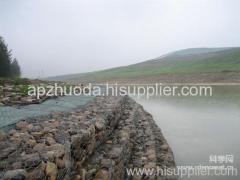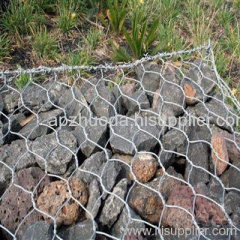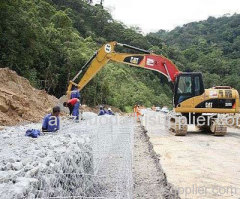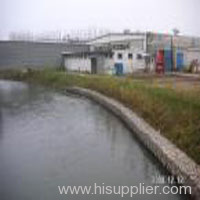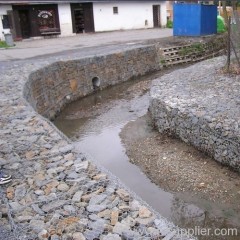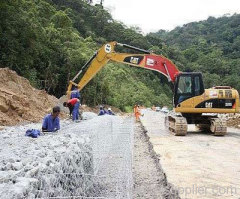
|
Anping County Zhuoda Hardware Mesh Co., Ltd.
|
gabion retaining wall
| Price: | 2.0~30.0 USD |
| Payment Terms: | L/C AT SIGHT OR T/T |
| Place of Origin: | Hebei, China (Mainland) |
|
|
|
| Add to My Favorites | |
| HiSupplier Escrow |
Product Detail
Gabion Retaining Wall
Mesh:6x8,8x10,10x12,12x15
Mesh Wire:1.8-3.8mm
Material:Galvanized,PVC Coated,Galfan
ISO9001:2000
Woven Gabion Retaining Walls
Gabion retaining walls provide stability by their disturbing forces resistance.
Gabion retaining wall is considered to be a flexible and free draining system. The design procedures for gabion walling follows the design criteria of BS8002-The Code of Conduct for Earth Retaining Structures.
When designing mass of gravity retaining walls, design checks must be carried out at each course level to ensure that the stability criteria is achieved throughout the structure. It is normal to incline the walls from the vertical by 6 or 10 degrees for aesthetics and stability.
The degree of inclination is a maximum of 6 degrees for the Gabion 39 System and 10 degrees for the Gabion 27 System. The walls face can be stepped or flushed.
The degree of the flexibility of a gabion retaining wall depends upon the filling type and quality, mesh type and mesh wire diameter.
Typically, the greater the filling angle, the greater the filling cares and the quality of installation. This results in a more dimensionally stable structure. The Gabion 27 System is the preferred type of products for these structures.
For mass of gravity retaining walls along water courses where flexibility is required, the preferable gabion type is manufactured from double twisted woven hexagonal mesh.
Didn't find what you're looking for?
Post Buying Lead or contact
HiSupplier Customer Service Center
for help!
Related Search
Gabion Retaining Walls
Gabions Retaining Wall
Retaining Wall Basket
Gabion Box Wall
Gabion Wall Construction
Gabion
More>>

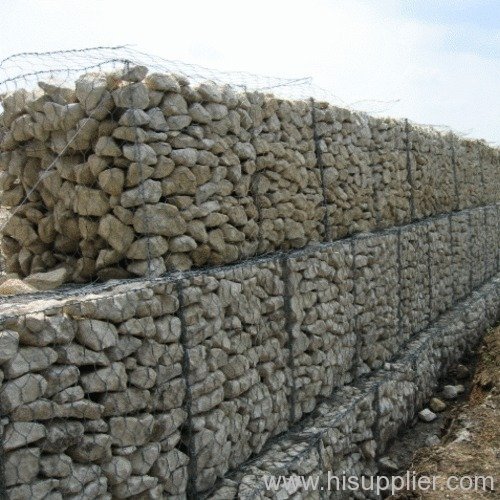
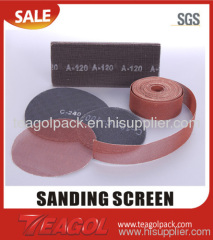
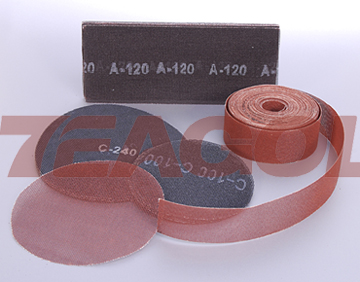

.jpg)

.jpg)
.gif)
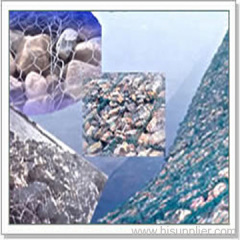
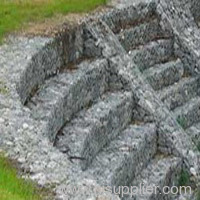
.jpg)
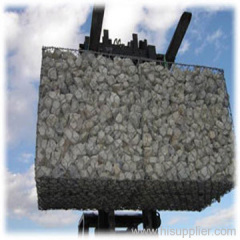
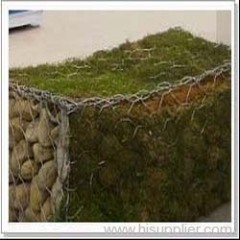
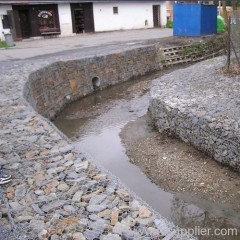
.jpg)
.jpg)
.jpg)

.jpg)
.jpg)
.jpg)
.jpg)
.jpg)
.jpg)
.jpg)
.jpg)
